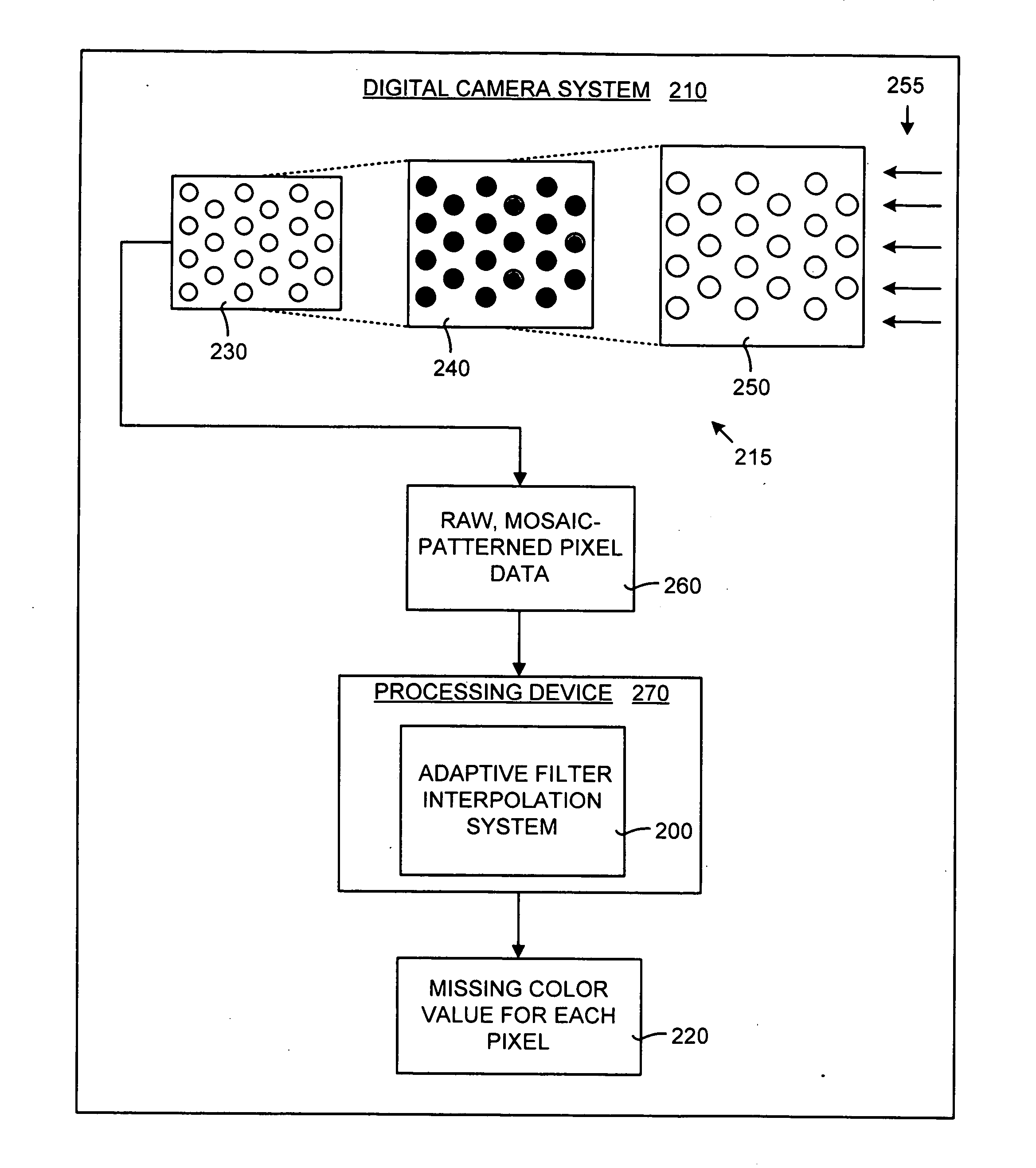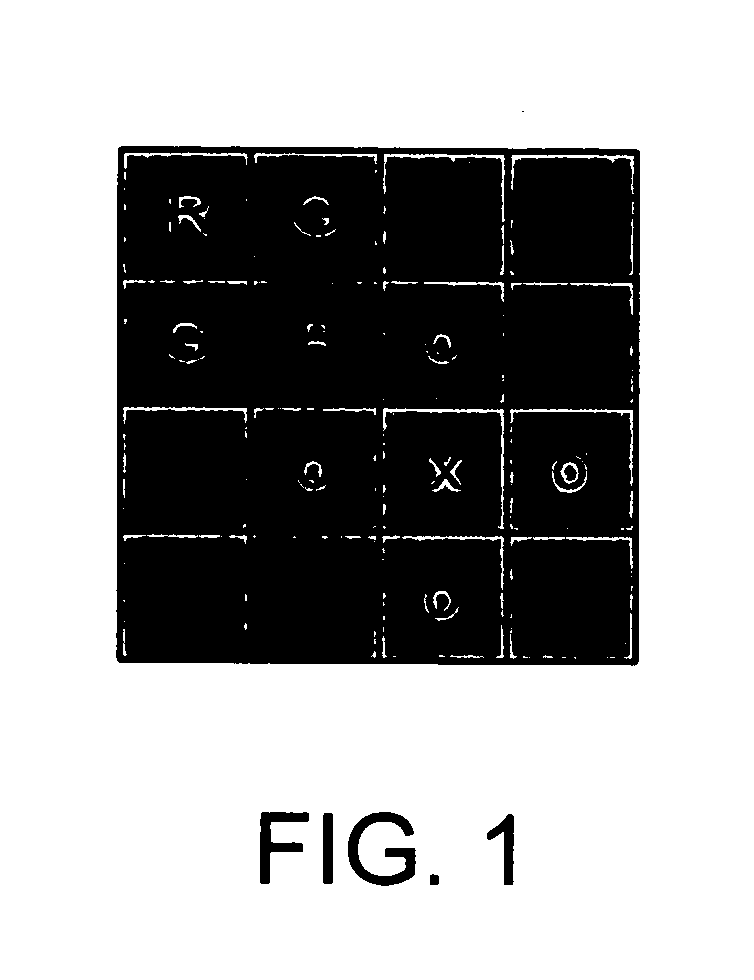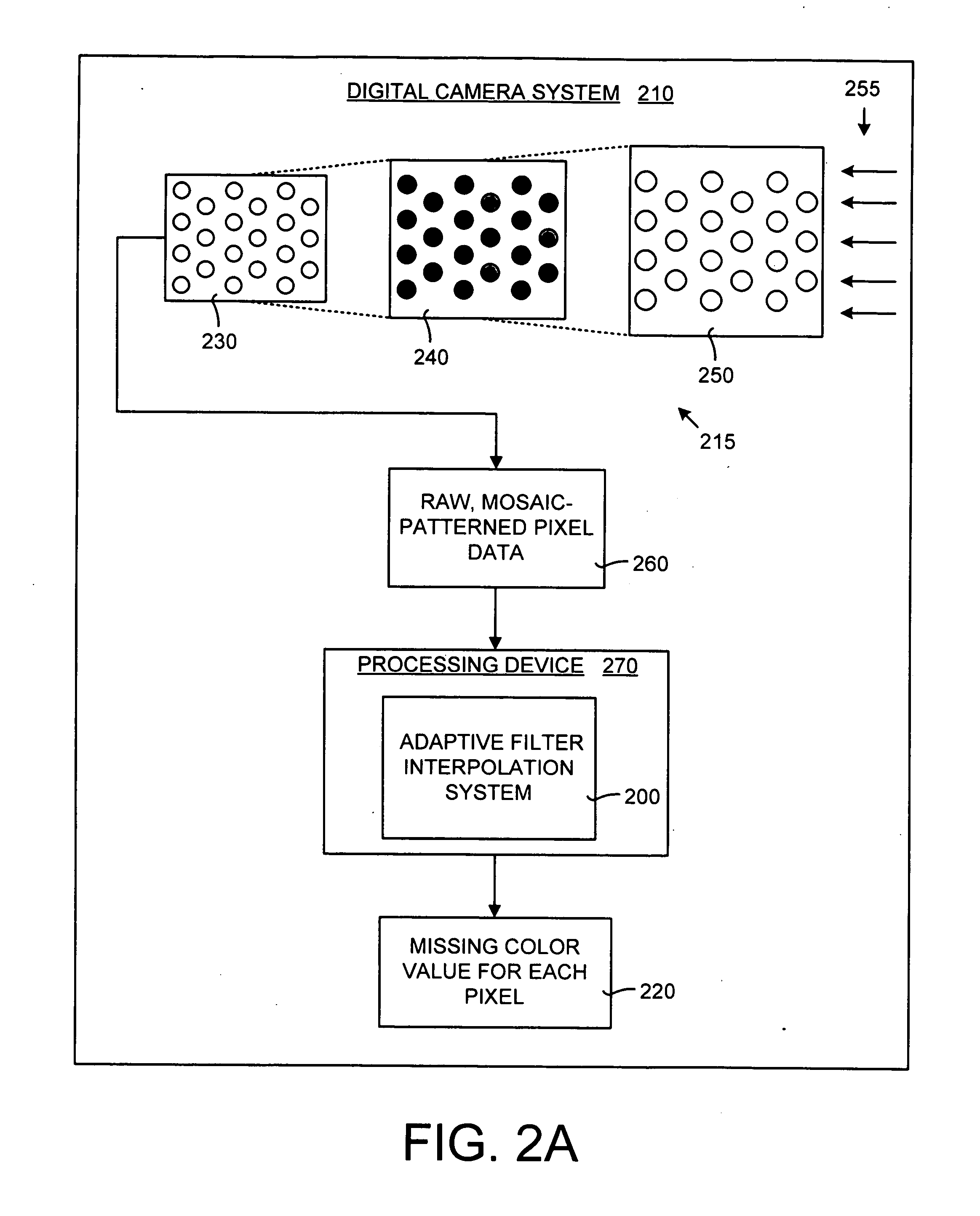System and method for adaptive interpolation of images from patterned sensors
a patterned sensor and adaptive interpolation technology, applied in the field of digital color image processing, can solve the problems of low image quality, low computational efficiency, and high cost, and achieve the effect of superior image quality and computational efficiency
- Summary
- Abstract
- Description
- Claims
- Application Information
AI Technical Summary
Benefits of technology
Problems solved by technology
Method used
Image
Examples
working example
IV. Operational Details and Working Example
[0063]FIG. 4 is a general flow diagram illustrating a more detailed process than is described in FIG. 3. In particular, an image in Bayer (mosaiced) format is input (box 400). A pixel location is selected based on raster scan order and its pixel color is extracted (box 410). Next, for the given pixel location, the horizontal and vertical gradients are computed by employing a region of support around the pixel location (box 420). The region of support is defined as a size of a pixel neighborhood whose color values are considered for computations associated with any given pixel, such as the current pixel. A gradient differential, Gd, dependent on the pixel location is then computed (box 430). This gradient differential is computed using the current pixel (having a current color and pixel location) and pixels within the region of support. The gradient-differential, Gd, is then compared to a threshold T and the interpolation filters are selecte...
PUM
 Login to View More
Login to View More Abstract
Description
Claims
Application Information
 Login to View More
Login to View More - R&D
- Intellectual Property
- Life Sciences
- Materials
- Tech Scout
- Unparalleled Data Quality
- Higher Quality Content
- 60% Fewer Hallucinations
Browse by: Latest US Patents, China's latest patents, Technical Efficacy Thesaurus, Application Domain, Technology Topic, Popular Technical Reports.
© 2025 PatSnap. All rights reserved.Legal|Privacy policy|Modern Slavery Act Transparency Statement|Sitemap|About US| Contact US: help@patsnap.com



